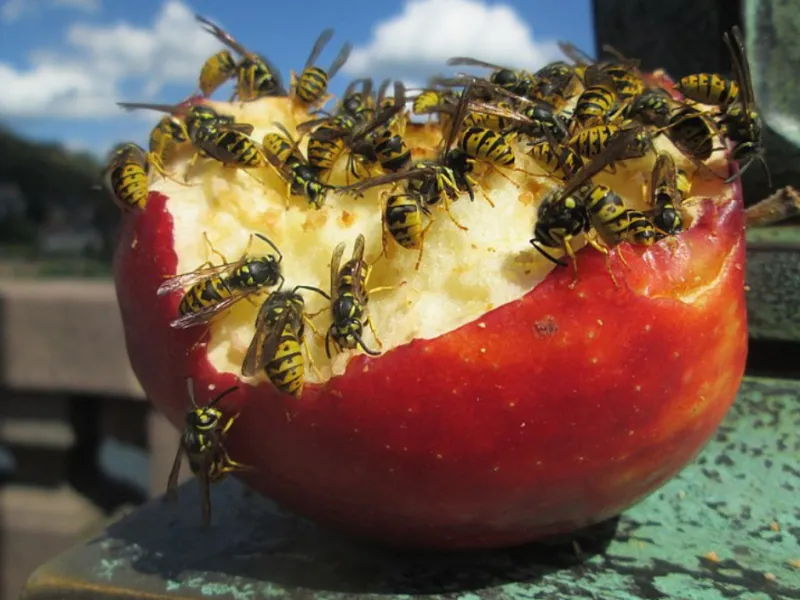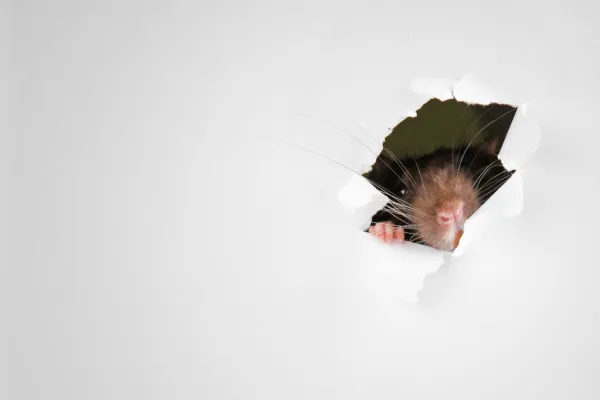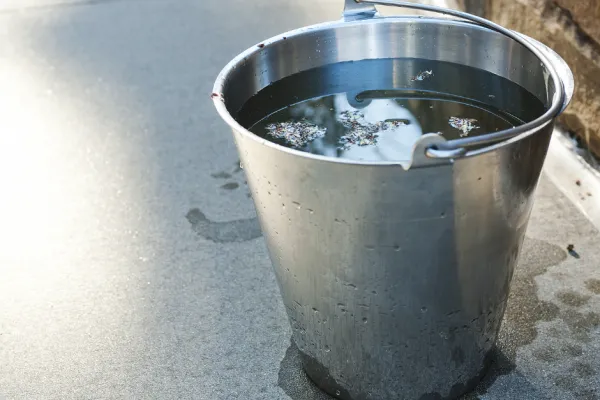Yellowjacket Wasps in the DMV Area

Yellowjacket Wasps in the DMV Area
When summer is in full swing, backyards in the DMV are buzzing with activity—literally. While honeybees and bumblebees usually keep to themselves, yellowjacket wasps are another story. By late summer, yelllowjackets are more aggressive than ever at cookouts, hovering around trash cans, and sometimes even attacking people and pets.
So why do yellowjackets become such a problem in August and September? Let's break it down.
Why Yellowjackets Are Aggressive in Late Summer
Yellowjackets don't just wake up angry. Their behavior changes with the seasons because of how their colonies grow.
Colony Growth Cycle
In the spring, a single queen starts a nest and raises her first batch of workers. Throughout the summer, that nest grows bigger and bigger. By late July or August, a colony may have 4,000-5,000 wasps buzzing around. That's a lot of stingers in one spot!
Food Needs Change
Initially, workers search for protein—such as insects and even bits of meat—to feed the developing larvae. However, by late summer, the larvae have grown, so the colony no longer requires protein. Instead, adult yellowjackets crave sugar. That's why you'll see them swarming fruit, soda cans, and picnic tables. With fewer natural food sources available, they become aggressive scavengers.
Colony Decline
As the season winds down, the queen stops laying eggs. The worker wasps become restless, stressed, and more likely to sting. This is when yellowjackets are at their most dangerous.
Yellowjackets Around Homes & Yards
If you've spotted yellowjackets in your yard, chances are their nest isn't far away.
Common Nesting Sites
Underground burrows (often old rodent holes)
Wall voids, attics, or eaves of houses
Bushes, shrubs, and dense landscaping
Foraging Habits
Yellowjackets usually forage within a few hundred yards of their nest. If you're seeing a lot of them near your porch or grill, the nest is probably close by.
What Happens in Winter
After the first frost, worker wasps die off. Only fertilized queens survive, hibernating in sheltered spots like logs, leaf litter, or even attics. In spring, each queen starts a brand-new nest.
Yellowjacket Dangers to Humans & Pets
Yellowjackets aren't just annoying—they're dangerous.
Multiple Stings
Unlike honeybees, yellowjackets can sting over and over again. And if one feels threatened, others quickly join in, leading to painful swarms.
Allergic Reactions
Their venom can trigger severe reactions, including anaphylaxis, in sensitive people. Even without an allergy, stings can cause intense swelling and pain.
Pets at Risk
Dogs and cats that disturb a ground nest can get swarmed quickly. Stings around the face, eyes, or throat are particularly dangerous, as they can lead to swelling that blocks the airways.
Aggressive Behavior
Yellowjackets don't need much reason to attack. Mowing the lawn, trimming shrubs, or even kids playing nearby can set them off.
Food Contamination
In late summer, they're drawn to outdoor meals, garbage cans, and pet food bowls—turning into both a nuisance and a health hazard.
Why Yellowjackets Are a Big Problem in DMV
Here in the DC, Maryland, and Virginia (DMV) area, conditions are perfect for yellowjackets.
Humid summers + suburban landscapes = plenty of nesting sites
Outdoor gatherings, barbecues, and pet feeding stations attract scavengers
Our longer warm season compared to northern states lets colonies grow much larger before winter
That's why homeowners in the DMV notice such intense yellowjacket activity from late summer through early fall.
Yellowjackets may play a role in controlling insect populations, but they're also a serious threat to people and pets—especially in late summer. Their ability to sting repeatedly, attack in groups, and nest close to homes makes them one of the most aggressive pests in the DMV.
If you spot a nest near your home, don't try to handle it yourself. Disturbing a yellowjacket nest almost always results in a swarm. Instead, call PestNow. Our professionals have the right tools and protective gear to safely remove nests and protect your family.
Yellowjackets in the DMV are most aggressive in late summer into early fall. Protect your home and yard by letting PestNow take care of the problem before it escalates.
Frequently Asked Questions About Yellowjackets
1. What's the difference between yellowjackets and bees
Appearance:
Yellowjackets are sleek, shiny, and bright yellow with black markings. They have thinner waists and smoother bodies.
Bees (like honeybees and bumblebees) are fuzzier and rounder, with more hair on their bodies to help collect pollen.
Behavior:
In late summer, yellowjackets become especially aggressive, scavenging for food around trash cans, picnics, and sugary drinks..
Bees are gentle pollinators. They usually only sting if they feel threatened or trapped.
Stings:
Yellowjackets can sting multiple times because they don't lose their stinger.
Bees like honeybees can only sting once because their stinger gets lodged in the skin, which causes the bee to die afterward.
Role in Nature:
Yellowjackets help control insect populations by preying on other bugs, but they're mostly scavengers.
Bees are critical for pollination, helping plants, flowers, and crops grow.
3. Why do yellowjackets seem to love soda and sweets? - By late summer, they shift from hunting protein to seeking sugar, which is why they show up at picnics and barbecues.
3. Do yellowjackets die after they sting? - No. Unlike honeybees, yellowjackets can sting repeatedly without dying.
4. Where do yellowjackets go in winter? -Workers die after the first frost, but fertilized queens hibernate and start new colonies in spring.
5. Can yellowjackets nest inside homes? - Yes. Yellowjacket wasps often build nests in wall voids, attics, and eaves, which makes professional removal especially important.
6. How can I keep yellowjackets away from my yard? - Keep trash cans sealed, clean up food after outdoor meals, and don't leave pet food outside. If you notice heavy activity, call PestNow for inspection and safe nest removal.


